Between Season 1 (that ran 18 sessions late last year) and Season 2 that begins in a few weeks on March 18, I’ve had the pleasure of DMing for 8 of 9 weeks (one was cancelled due to extremely bad weather in Atlanta) and having control over the adventures that I bring to the table. All four DMs were asked to try and stay on track for Chapters 4 and 5 of The Hoard of the Dragon Queen, but we were allowed to deviate as long as when we ended (with last night’s adventure) the players were roughly in place to pick up and start playing Chapter 6 elsewhere (such as a private campaign). The basic idea was the players needed to get from Elturel to Baldur’s Gate to Waterdeep and then discover the rendezvous point for where the cultists were delivering their loot from all the attacks on nearby villages. While the book provided its own suggestions for mini-adventures and encounters, I really tossed most of it out and ran with my own stuff.
First, my players encountered a small band of cultists performing a dark ceremony deep underground beneath a forgotten crypt in a roadside graveyard on the way to Elturel (Part I and Part II write-ups). Once in Elturel, they were put on a boat to Baldur’s Gate and spent a little time on an abandoned cargo ship with a surprise crew member in the hold (Part I and Part II). After reaching Baldur’s Gate, the players were sent north to Waterdeep where they encountered a very strange “temple” in the woods with some of the most unusual creatures they’d ever seen (Part I and Part II). Their travels finally brought them to Waterdeep, where they were given a mission to retrieve a map to the cultists’ hideout and find and scout it out. Last night’s adventure was the culmination of the players finding this location, and, because last week’s adventure was called off for weather, I had to quickly adjust the adventure I’d created and get the players to the heart of the story. This required a bit of a Dungeons & Dragons history lesson… (and, interestingly enough, it fell on the anniversary of the death Gary Gygax, co-creator of D&D, and what is now celebrated as International GM Day. More on that later in the post.)
The Temple of the Frog
For about five minutes, I shared a brief explanation of the history of D&D; I showed them my copy of Chainmail and explained how Gary Gygax and Jeff Perren had created a set of miniature combat rules that also included the “Fantasy Supplement”–rules for running combat with dragons, orcs, trolls, and much more. Dave Arneson ran a fantasy campaign that was seen by Gygax, who in turn asked Arneson to join him in creating a new type of game. This would become the first three books of Dungeons & Dragons. In addition to those first three books, supplements were later published. One of these, Blackmoor, provided details on the setting that Dave Arneson had created for his players. Deep inside the land of Blackmoor was the Great Swamp of Mil. And tucked away in this swamp was the Temple of the Frog.
Tucked in the back of the Supplement II: Blackmoor booklet was the very first published adventure. This was years before the release of D&D modules–those 30+ page books that would come with maps and notes for Dungeon Masters to run and pit against their players. For 21 pages, Arneson provided creatures to fight, magic weapons and armor for players to find, and dozens upon dozens of rooms, caves, and other areas to explore.
By today’s standards the Temple of the Frog adventure was a little unbalanced. The temple was heavy on treasure (almost every other room had some sort of treasure such as 16,000 gold pieces in a small room on the second floor or 600 pieces of platinum hidden in a small desk–how do you HIDE 600 pieces of platinum in a small desk?) AND heavy on monsters. This was a living, breathing temple–fully inhabited with 100 enemies in this room, 50 in that room, and amazingly “[w]ithin the first level of the dungeons under the Temple are some 1,000 guards who are always available to relieve the city guard.” City guard? Oh yeah, there were 30 men at the gates, 400-500 potential enemies inhabiting the surrounding tent-city, and hundreds of giant frogs in the caves below the temple who have been bred over the years to be aggressive and meat-eaters.
I’m writing in past-tense because by the time my players discovered the Temple of the Frog, it was in ruins from century of neglect. What used to be a three-story building now had its top two floors crumbled away leaving behind only a couple of walkways that may or may not be safe to climb. The players were there because they’d discovered some information that this was the cultists’ entry point to some caves beneath the temple that allowed them to smuggle away their ill-gotten gains.
Note: I took some GREAT liberties with the Temple of the Frog. First, this thing was HUGE. I shrunk it down substantially. Arneson provided a number of hand-drawn maps (complete with his own hand-drawn graph paper!) that provided the basic shape and levels of the temple and surrounding area, but an exploration of the temple was out of the question due to limited time. Also, the temple was located in Blackmoor which is NOT in the Forgotten Realms. By some powerful magical force, what remains of the temple has been transported to the Sword Coast. Amazing.
So, that’s where the night’s adventure would begin… right outside the main entrance to the ruins of the Temple of the Frog. I had six level 5 characters sitting at my table, and I wasn’t wanting to make it easy for them to find and gain entrance to the secret tunnels beneath the temple. This meant coming up with a good mix of creatures that would give them a run for their money… hopefully. And that meant it was time to reach for the 5e Dungeon Master’s Guide for some help.
Creating a More Customized Combat Encounter
Much of what you’ll read below I would label as Voodoo Math. It’s tricky, and there are times it works… and times it will not. What’s great about the 5e Monster Manual is that each creature comes with that Challenge Rating. A creature with a CR of 1/4 or 1/2 shouldn’t be any problem for a party of six level 1 or higher players. A creature with a CR of 15 could very easily shred a party of six level 5s in under two rounds if the DM plays it straight. So how do you go about finding the right mix of creatures to pit against a known party size and levels? It’s not perfect, but the DMG can help. If you have your copy handy, class, turn to page 81 and start reading the section titled “Creating a Combat Encounter.” I’m going to walk through the four steps in this section below to show how I developed what I hoped would be a fun combat encounter for my players inside the walls of the Temple of the Frog.
Step 1. Determine XP Thresholds
You first need to decide how easy or hard you want to dish out damage to your players. There are four levels–Easy, Medium, Hard, and Deadly. I know from running this team through a number of adventures that Easy and Medium just isn’t cutting it. For my last mini-adventure (The Laboratory of Jir-Nee Zub) I used a Hard difficulty level with five level 4 characters playing and it was a fairly even match with the players going up against a level 9 wizard. Now that those players have all leveled up, I’m having to re-examine some changes such as the fighters and ranger now having dual attacks and the cleric being able to resurrect. Also, the bard and warlock can cast some pretty nasty spells using higher spell slots. Should I make it a Hard level again… or push them into the Deadly range?
Due to the nature of Adventurers League and Encounters nights (Wednesdays), I don’t always know in advance the number of players who will be sitting at my table… or their character levels. It’s a guessing game, but our groups have fallen into a pattern of sticking to their same tables (mostly). For me, it usually comes down to whether I’ll have five or six players at my table on a given night. For this reason, I’ll be setting up a combat encounter with a lower end (five players) and an upper end (six players).
It’ll be up to me to tweak the combat encounter if I find, for example, a couple level 4s or 3s at my table, or maybe an extra players gets squeezed in for a total of seven players at my table. Thankfully, I usually have about 15-20 minutes before the game night begins, so I can do some fast tweaks as my players begin to arrive and I get a better idea of the player number and level mix. (It also helps that Titan Games & Comics uses Meetup.com, so I can check to see who has RSVPed YES and have a pretty good idea of how many players will be at my table for the night.)
Step 2. Determine the Party’s XP Threshold
Next, I need to calculate what’s called the Party XP Threshold. There’s a table on page 82 that makes this easy. The columns are Character Level, Easy, Medium, Hard, and Deadly. For calculating a party of five level 5 characters, the four threshold values would be:
Easy: 250 (x5) = 1250
Medium: 500 (x5) = 2500
Hard: 750 (x5) = 3750
Deadly: 1100 (x5) = 5500
I’ve already decided to scrap the Easy and Medium thresholds, so I’m going to perform further calculations using an assumed party size and mix as follows:
P5.5H = Five level 5 characters playing at Hard level = 3750XP
P5.5D = Five level 5 characters playing at Deadly level = 5500XP
P6.5H = Six level 5 characters playing at Hard level = 4500XP
P6.5D = Six level 5 characters playing at Deadly level = 6600XP
Step 3. Total the Monsters’ XP
This bit can be a little tricky if you haven’t given much thought to what kind(s) of creature(s) you’re going to toss at our players. The Challenge value found in the Monster Manual for each creature is very helpful, but you’ll have to consult the DMG for a the more organized listing of creatures by Challenge Rating (pages 306-309).
This isn’t an apples-to-apples decision, either. A creature’s Challenge value does not necessarily equate to a player character’s level. You can’t pit a Mindflayer (Challenge 7) against a single Level 7 character (unless you’ve determined the Mindflayer MUST be fed). As a matter of fact, the MM states quite clearly on page 9 that the way to use the Challenge value is to assume a party of four adventurers of the same level as the Challenge value being considered. This would mean a party of four level 7 characters should be able to handle a single Mindflayer. (A few weeks ago, I had a party of six level-4 characters go up against a Mindflayer and they did pretty good, but I will admit I held back a bit on the Mindflayer’s full capabilities. Not much, but enough.)
So how do you use Challenge value when dealing with a party of five or six (or larger) members? Thankfully the DMG addresses this issue, and I’ll discuss that in the next step.
For now, I need to pick the creatures I want to pit against my players. I can write about this now as the battle has already occurred–my players will encounter a small cult of Kuo-Toa inside the ruins of the Temple of the Frog. This will be a fight to the death, as the Kuo-Toa will not forgive the violation of their territory.
Five or six players will face the following:
Kuo-Toa (Acolyte – most basic version of this creature) – Challenge 1/4 (50XP)
Kuo-Toa Whip (stronger version with minor spell casting ability) – Challenge 1 (200XP)
Kuo-Toa Archpriest (spellcaster) – Challenge 6 (2300XP)
Assuming my players are coming up against a small cult, it makes sense to have more of the underlings and fewer of the more challenging creatures. My first guess would be something like one Archpriest, 2-4 Whips, and 20-30 Acolytes. I could easily have the players finding just the Archpriest by itself, but where’s the fun in that?
What you’re trying to do is come up with a total XP value for the monsters that floats around the threshold values determined in Step 2 above. So, for a party of six level 5 adventurers, a Hard combat session threshold (P6.5H) = 4500XP and upper threshold (for Deadly) = 6600. Based on just XP alone, the basic Kuo-Toa (Challenge 1/4) offers 50XP. Dividing 4500/50 = 90 Kuo-Toas. Yeah… 90. I really don’t like to run combat sessions that exceed 10 or more hours, but now I at least know the maximum number of basic Kou-Toas. So, no… I’m not tossing 90 Kuo-Toas at my players.
Note: The Challenge Rating can also be a bit difficult to use, however, when you’re dealing with fractional values. The basic Kuo-Toa has a Challenge value of 1/4. But examining this creature more closely shows it has 18HP and an AC of 13 along with a few special abilities. It might be tempting to use this fraction value and multiple it by 4 to equal a Challenge value of 1–this would pit four level 1 characters against four Kuo-Toas. It could be argued this is a “fair fight,” but, if all four of the Kuo-Toas focused an attack on a single level 1 character, it wouldn’t be a long fight. As you can see, the Challenge Rating doesn’t always do well (at least with basic Kuo-Toas) when it comes to using multiplication.
So what’s the solution? It’s on the horizon, but there’s still a little work left to do. I need to come up with a mix of creatures. It may not be the final mix, but it’s a start.
The Archpriest has an XP value of 2300. If I toss in four Kuo-Toa Whips (value of 200XP each), I’m up to a total of 2300+800 = 3100. Subtract that from my 4500 Hard Threshold and I get 1400… divide that by 50 = A LOT of basic Kuo-Toas. Hmmm… that’s still 33 creatures to manage (as DM). For every Whip I add, I can subtract 4 basic Kuo-Toas. I’ll play around with the numbers a bit and try out this mix:
1 Archpriest
8 Whips
17 Acolytes
Total = 26 creatures. Way more than I like, and probably still WAY MORE than they players will finally end up fighting. That’s because there’s some fine-tuning that must be done based on the fact there are multiple monsters AND more than the standard 3-5 players. I’ll need to make some adjustments, and the DMG is already looking out for me.
Step 4. Modify Total XP for Multiple Monsters
Note: On page 83, don’t forget to consult the change in modifier that will take effect for party sizes that don’t fall between 3-5 in number. For parties of six or more, the DMG tells you to use the next lowest multiplier for the “Encounter Multipliers” table.
Using the table on page 82, I find that for any group of monsters over 15, the XP has a multiplier value of 4 (but I must lower to 3 because of six party members). Multiplying 4500 x 3 = 13,500. Compare this to the (Deadly) 6600XP that a six-member party of level 5 characters generates. Massacre, right? So, obviously I need to make some adjustments. The biggest villain (Archpriest) has a value of 2300XP. If I keep the the quantity of monsters over 15, that multiplier will stick around 3. That 2300XP x3 = 6900. Still over that 6600 Deadly threshold with just a SINGLE creature!
Obviously a substantial culling is necessary. I want that Archpriest to stick around, so about the only thing I can do at this point is reduce the quantity of other creatures so that 3x multiplier drops. The next range is 11-14 creatures. Let’s play with that a bit:
1 Archpriest, 3 Whips, 10 Acolytes = 14 creatures
2300XP + 600XP + 500 = 3400XP
Multiplier = x2.5 = 8500XP
Nope… still too many. Let’s try this:
1 Archpriest, 2 Whips, 7 Acolytes = 10 creatures
2300XP + 400XP + 350XP = 3050XP
Multiplier = x2 = 6100
BOOM. 6100XP falls between Hard 4500XP and Deadly 6600XP. The rules say to compare this value to the player XP threshold and select the difficulty (Hard or Deadly) that is lower than the adjusted Monster XP… that would be the 4500XP Hard threshold. Looks like my six level 5 players will be going up against 1x Archpriest, 2x Whips, and 7x Acolytes. Of course, it’s up to me (the DM) to direct the Acolytes so they can free up the spell casting Archpriest and two Whips to do their worst.
Note: Further reading on page 83-85 offer up more suggestions for using just the XP value of monsters PLUS the multiplier (for number of monsters in the group) to quickly create combat scenarios based on your desired difficulty threshold.
As you can see, creating a customized combat scenario isn’t extremely difficult… some basic math and a few trial-and-error tweaks can get you a suitable match up based on the number of players at your table and their mix of levels.
Of course, this doesn’t take into account the individual characters and their skills. I’ve got a ranger in my regular group who hits with 90% or higher accuracy on any creature with less than AC18. I’ve got a cleric in my group with a base AC19… pretty much nothing hits him unless he gets in close. When he chooses ranged attacks, I usually have to rush him with one or two heavies just to deliver some damage. The other players all have their own specialties which keep this DM on his toes. So what can I do as DM to prepare for the possibility that my players may finish the combat too quickly? Easy–always have something a bit more deadly waiting outside.
What I chose to do is give my two Whips a special ability–if they could get within 30 feet of the entrance of the temple, they could each “sing” a song and lure in a Swamp Elemental. Wait, a Swamp Elemental? That’s not in the 5e Monster Manual! You’re right, but the Water Elemental is in there, and it’s not too hard to make a few tweaks here and there:
Swamp Elemental: AC16 HP114 Speed 40ft
I kept the SLAM attack but mainly used the ENGULF attack–the cleric actually got “absorbed” and spent about three rounds wedged into the body of this thing. I also added a RUSH attack that allowed the Elemental to Dash forward (16 squares!) and anything in his direct path had to make a Dexterity save or get “absorbed” as well. Even if not absorbed, they take damage and are knocked prone for next turn. The thing could take double-damage from fire and lightning–always good to give a powerful creature a weakness for the players to try and discover.
Again, I kept this thing in reserve… I printed out two 2×2 minis and kept them close in case the coach called them up. The Whips wouldn’t make the call unless the fight was going south. Below I’ll share the results of the night’s adventure.
Battle at the Ruins of the Temple of the Frog
These players were cautious. Almost TOO cautious. The first ten minutes of the game, they were still lurking around just inside the entrance to the temple. I had the first level drawn out on a large sheet of grid paper–the original temple layout had dozens of rooms scattered throughout the three levels, but I simplified it a bit and just drew in collapsing walls. The ranger climbed the crumbling stairs to a small bit of Floor 2 that had survived and not crumbled. A large gap had to be jumped for him to get to a different area where he might scout out ahead, but he rolled a 1. Fortunately for him, another player cashed in a re-roll ticket (players get one if they spend $5 or more at the store before the night begins), and he rolled high enough to make the jump. A few additional stealth checks were required for him to navigate to the end of the short “hall” and he made a Perception check that allowed him to spot a trap and avoid it–a tripwire that would have tumbled a bunch of rocks down and alerted the creatures waiting deeper into the temple.
The party split left and right mostly, and, while all the characters were hearing twittering and strange sounds, they couldn’t see straight down the entry hallway due to carefully stacked crates and barrels that blocked their view. Aramel, the team’s warlock, headed up the other set of stairs that led to Floor 3. His Perception check allowed him to safely navigate along the wall to get into a better position to look down and ahead–the rest of the party’s view was obstructed, but Aramel and Rolan (ranger) had a solid view of what waited for them. Finally, Essie (fighter) snuck forward and peaked around the wall. She made her Nature check (a Natural 20!) and was able to relate to the rest of the team that a group of Kuo-Toa were in the worship area of the temple. The players huddled and decided that Aramel and Rolan could attack from above while they tried to lure the Kuo-Toa out one at a time through a small opening in the wall.
COMBAT!
Much of the fighting went as I expected. The Kuo-Toa Priestess was identified by the players as the Big Bad and she started taking damage. Fortunately, she was able to cast a 3d8 healing spell that kept her in the game for some time. The Kuo-Toa acolytes (very stupid creatures) kept failing their Intelligence rolls and throwing their spears at any visible characters. This meant they were only left with Bite attacks which don’t really succeed often with level 5 character Armor Class ratings. The Two Whips were able to cast some damaging cantrips and they “urged” the acolytes to attack in number. A few acolytes knocked down the crates and barrels blocking the hallway and attempted to flank the characters, but the players weren’t having it. Aramel cast a couple of solid Sleep spells which took out a few acolytes and the first Whip, seeing what was happening, attempted to make a dash to the temple entrance… he died. Argh. Chi and Essie (fighters) were slashing with glaives and taking out acolyte after acolyte.
As the players focused on the acolytes, I took the Priestess out of view of the ranger who was just devastating her with bow attacks. She healed up and went with the small group down the hallway to try and flank as well. Borax (cleric) was on the nearest side to the flanking move, and with his AC19 the spears were flying but none were hitting. The surviving Whip, seeing what was happening, ran for the entrance. Edaliu (bard) stayed hidden, biding her time and seeing what the Whip was up to… and then he began to sing.
The priestess tried to heal her acolytes, but the players were overwhelming and finally managed to take down the acolytes and priestess. The battle looked to be over, but what’s this?! Some swampy giant creature has just entered the temple–the surviving Whip hit him with an AC+2 spell and the Swamp Elemental dashed forward–Borax (cleric) was sucked into his body. For the next three turns, Borax tried (and failed) to make his Dex save roll to let him leave. Meanwhile, Edaliu and Rolan had unfortunately lined up between the rear wall and the elemental–the Swamp Elemental dashed forward again. Both players failed their Dex rolls and were knocked prone and took some damage. The elemental slammed into the wall and was stunned for one turn.
Aramel made an Intelligence check after spotting the Elemental and suggested to the players that this thing might have a weakness to fire or lightning. He fired a Lightning spell and did some solid damage that kept delivering turn after turn. Essie yelled at Rolan to stand up and run over… she began rummaging through her backpack.
The Elemental stood up, but by this time Essie had soaked a rag in oil and wrapped it around Rolan’s arrow. He hit the Elemental solid once… then again. The creature fell.
The players were able to scout the temple and discovered the hidden panel that led to the caves below. All that was needed now was to report this back to the Order of the Gauntlet so a larger force could be dispatched to enter the tunnels and try to follow the cultists on to their next destination…
For their reward, I gave each player a small laminated card of the Supplement 2: Blackmoor cover. They cleared the temple of its latest scourge and had provided the Order of the Gauntlet with vital information related to stopping the cultists and their evil plans.
Nice job, players.
International GM Day
So, it turns out that March 4th is International GM Day. I’d like to thank Stephen for the bag of popcorn and Paula for the awesome chocolate bar–I ate both on the ride home because I was starving.
 I’d also like to give a special thank you to Sebastian; he surprised me with a hand-painted miniature. I’m blown away–this is definitely a skill I do NOT have, so I appreciate the time and energy that went into painting this thing. If you like what you see, let Sebastian know in the comments.
I’d also like to give a special thank you to Sebastian; he surprised me with a hand-painted miniature. I’m blown away–this is definitely a skill I do NOT have, so I appreciate the time and energy that went into painting this thing. If you like what you see, let Sebastian know in the comments.
Season 2
Next week (March 11) players will come together at Titans to roll up their new Season 2 characters–and Wizards of the Coast will once again be providing the faction folders to players with lots of good stuff tucked inside (and DMs get their own versions of the folder).
You can read more about Season 2 here, but it’s going to be awesome. I have fond memories of running parts of the Temple of Elemental Evil adventure (still have the T1-4 book, too) and I’m very curious if there are any links to that original adventure or if the name is all that’s shared… I’ll find out a few days in advance of the players and then return to the DM table on March 18.
I don’t know about your Adventurers League gatherings, but Titan Games & Comics is busting at the seams… both Encounters and Expeditions events lately have been filled to capacity. If you’re in the Atlanta area and want to play this season, be sure to show up next week and create a character. Once the season starts, there are a limited number of seats (4DMs and 6 players per table = 28 slots) so RSVP as soon as you can once the invites go out… and the only way to get those invites is to sign up on the Meetup.com page here.
Note: And congratulations to our event coordinator, Topher Kohan–he just got a promotion and is now working as the Southeast Coordinator doing Southeast Coordinator stuff for Adventurers League and WotC. I’m confident of three things–it’s often a thankless job and it’s an important job. And Topher does well at it. Thanks, Topher!
That’s it for now… I’ll be back in a few weeks and a new DM Report after Season 2-Session 1 is completed.
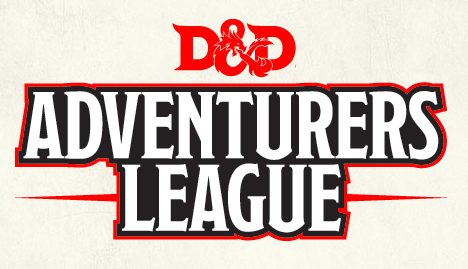

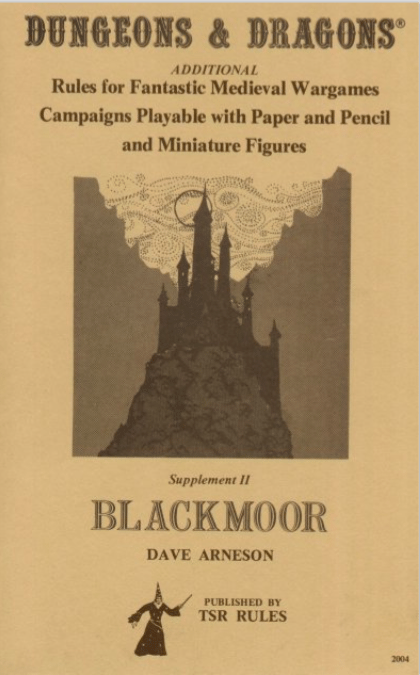
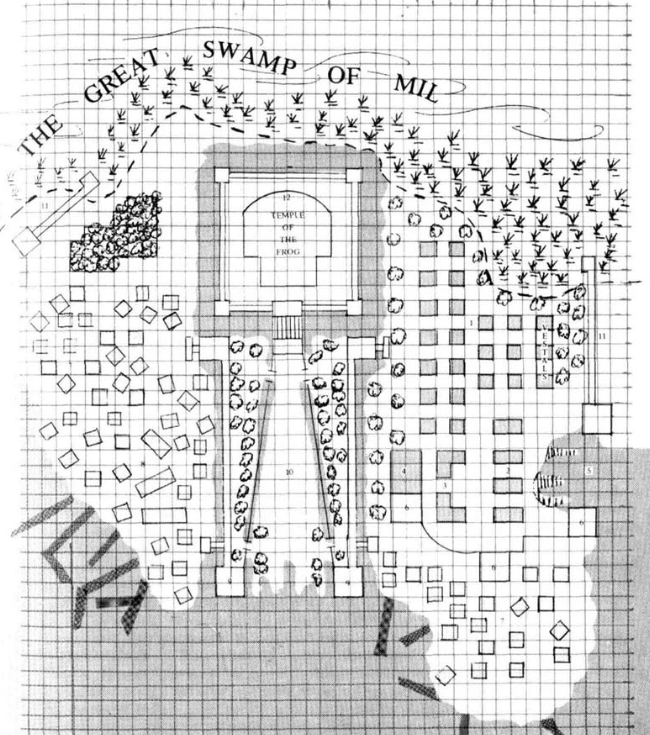

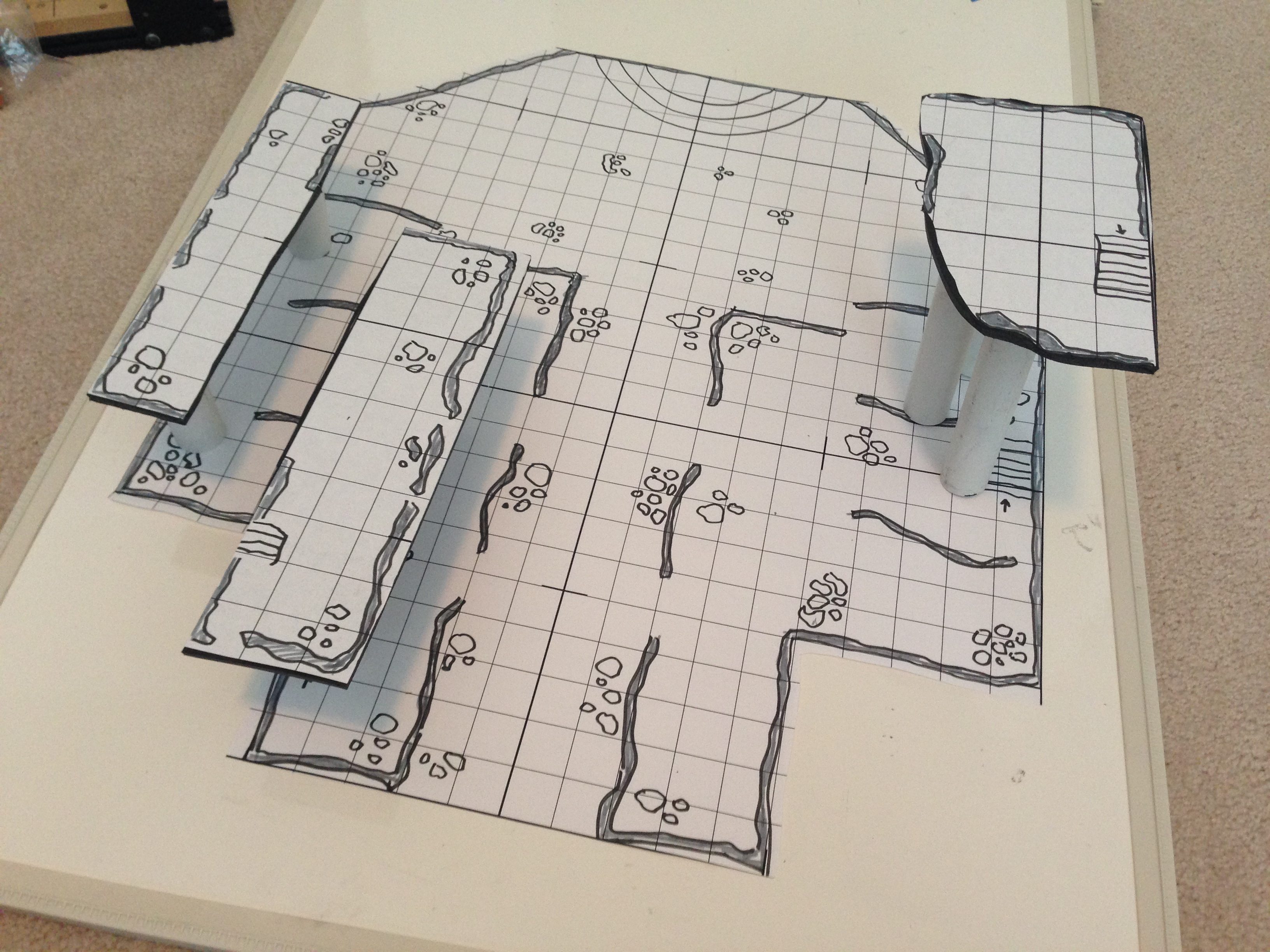
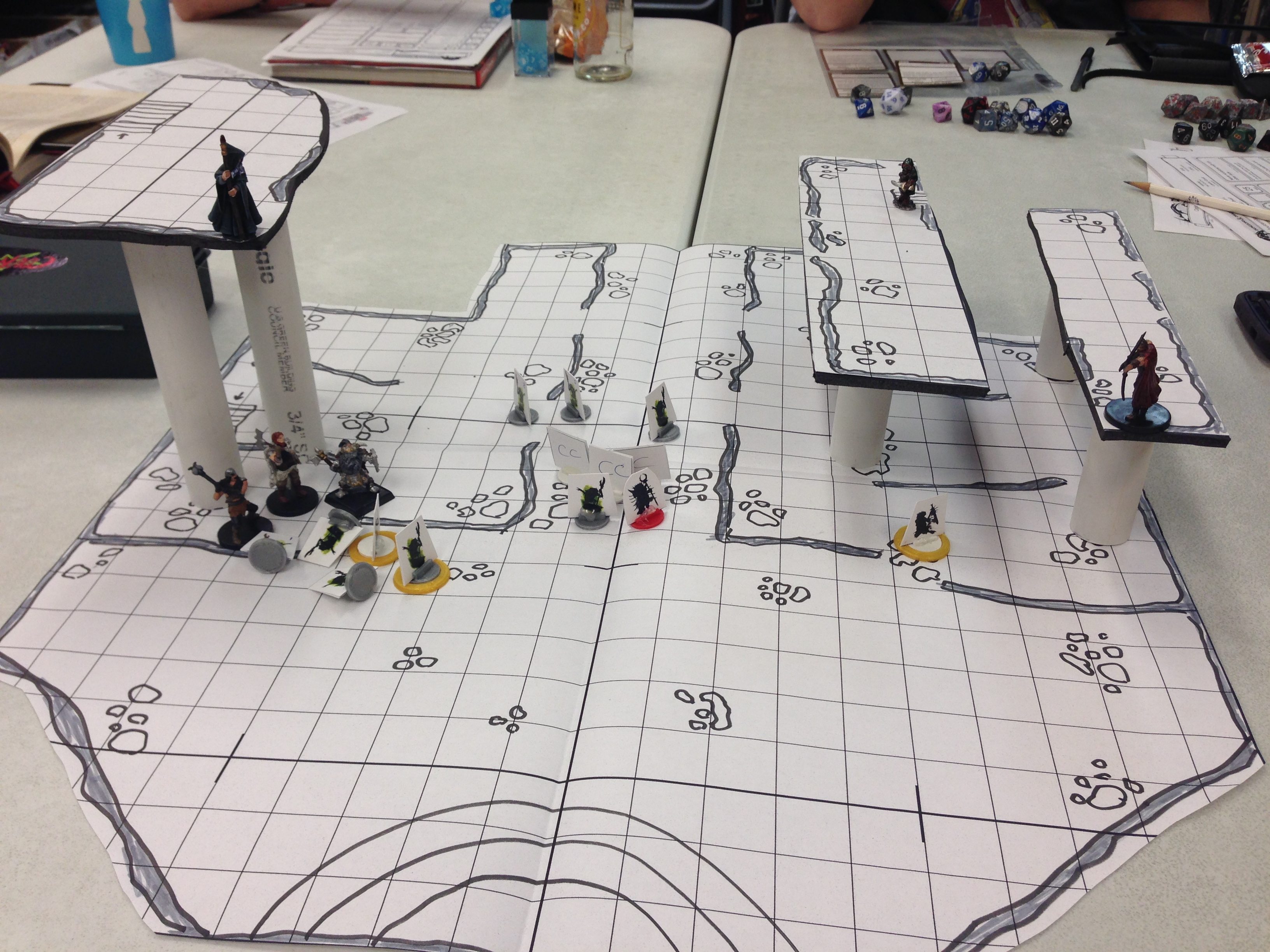
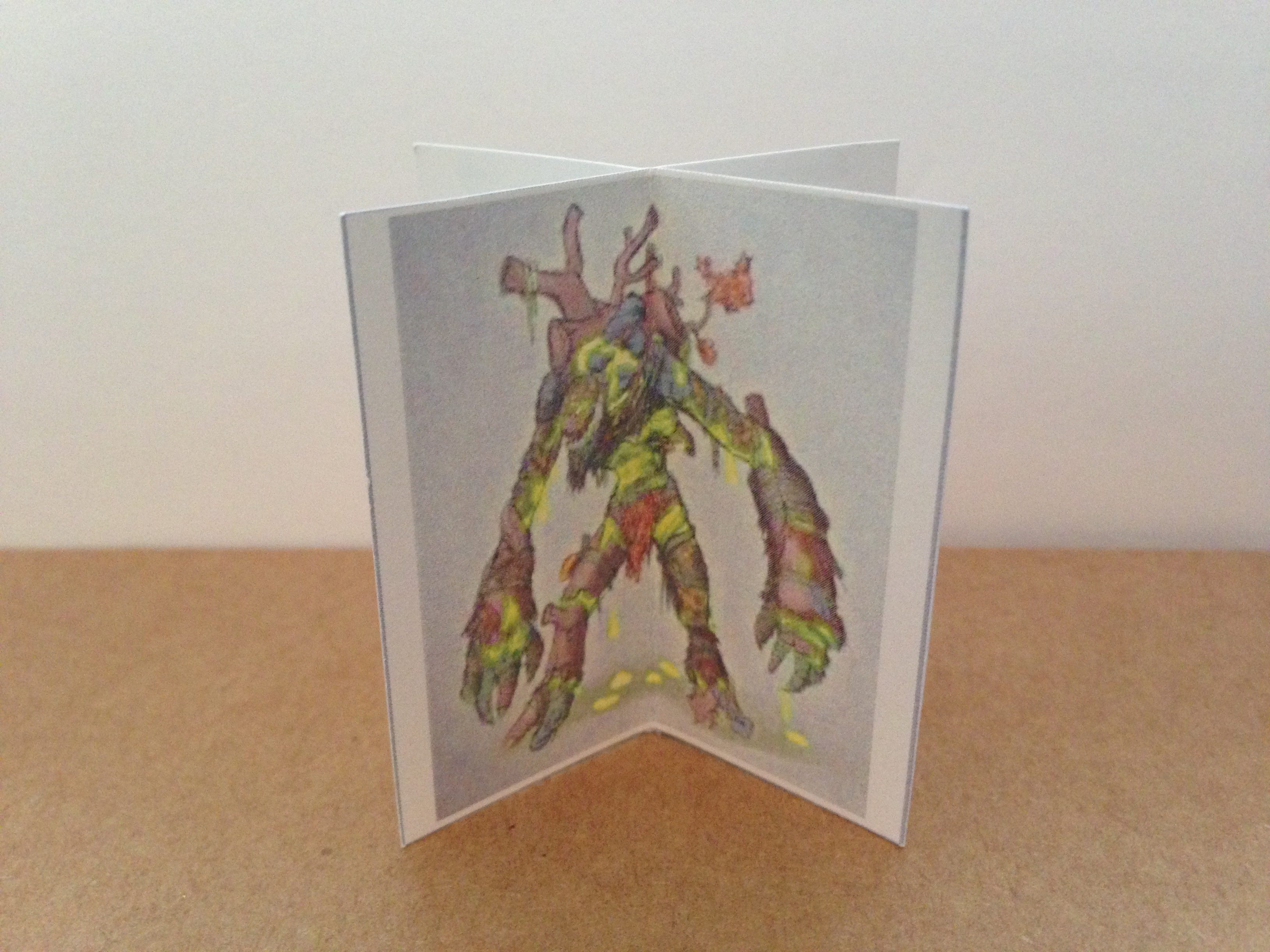



Very nicely done! I find that some of these older mods were just so crazy detailed that it was easy to get lost in them. I like how they were simplified to keep focus where it should belong. I love the platforms for the second level stuff. I’m going to have to use that!
$1.50 for a 10 foot length of PVC… cut it in 3″ and 6″ lengths for 2nd and 3rd floor levels. Easy.
Great tip. *adds it to DM’s tool box*